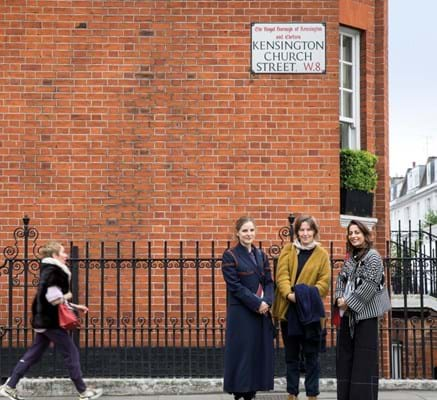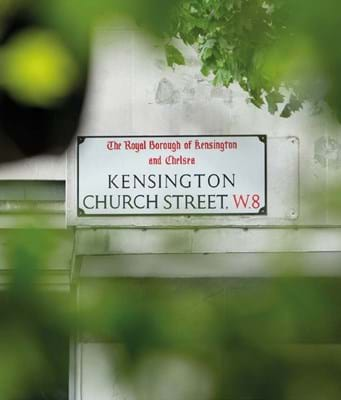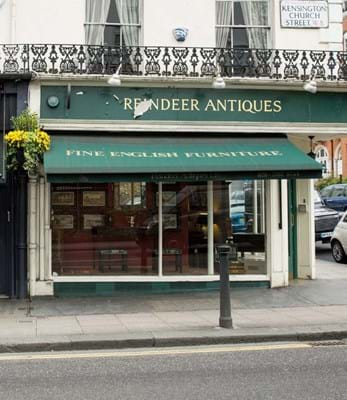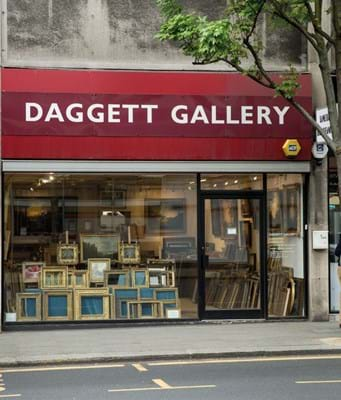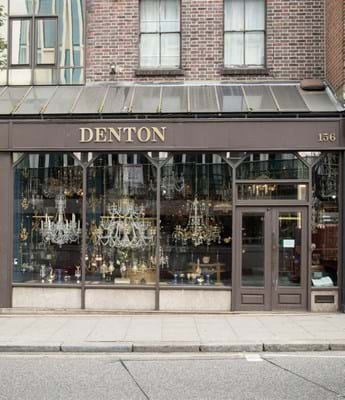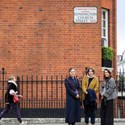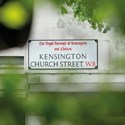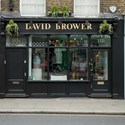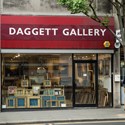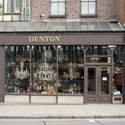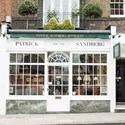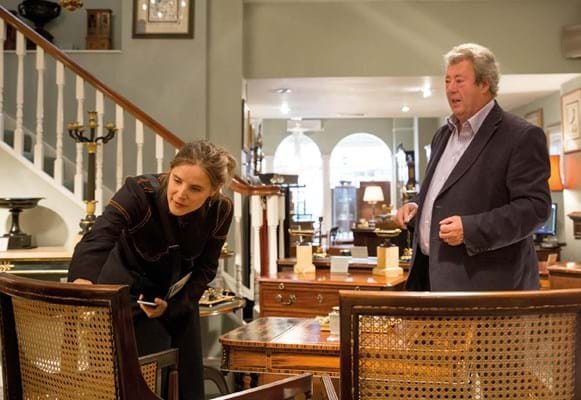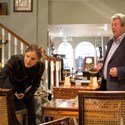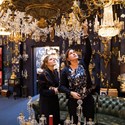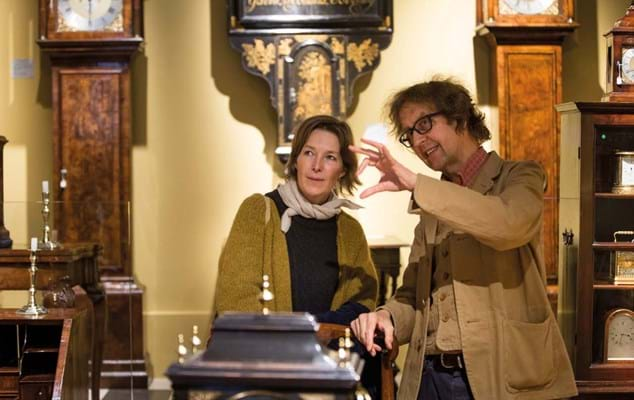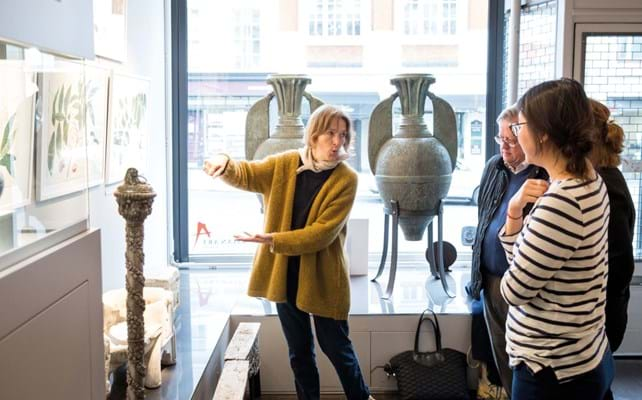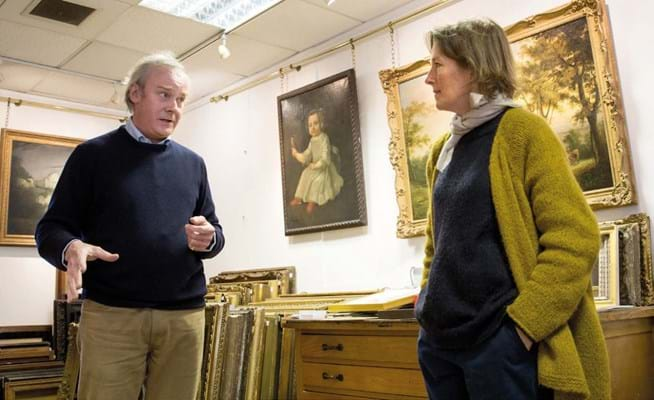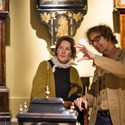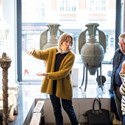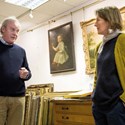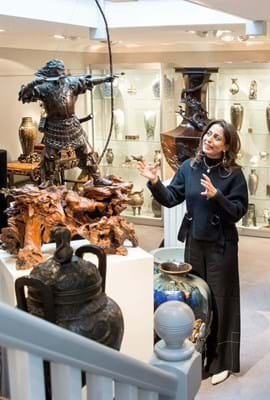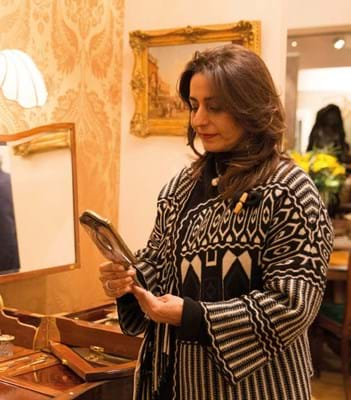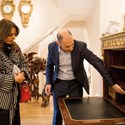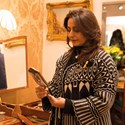It’s not just about the look. Great art and antiques appeal to interior designers in just the same way they do to traditional collectors. They represent craftsmanship and ingenious design. They stand out from the crowd. They can be status symbols. And they tell great stories.
That much was clear when ATG’s editor Noelle McElhatton took three London-based decorators on a guided tour of a major London antiques thoroughfare one day in May. As the designers gathered at the top of Kensington Church Street, Shalini Misra, interior architect, designer and developer, muses on how antiques fit into current interior thinking.
The antiques 'narrative'
"Antiques add layers,” Misra observes, using the common parlance. “Clients find great joy when acquiring a beautiful piece, be it an antique or a craft object. Yes, it’s about how it looks in the chosen space. But it’s also about the narrative and with antiques, there is so much to talk about.”
The 40-plus dealers in Kensington Church Street are keen to impress their guests. Quality here goes without saying. But they are also eager to throw off any suggestion that London’s archetypal antiques street – its Georgian frontages a place of pilgrimage for connoisseurs for over a century – might be a little intimidating and, dare we say, too old-fashioned for the 21st century zeitgeist.
“We are a traditional English furniture dealer,” says Patrick Sandberg, chairman of the local dealer association. “We might not always have what you are looking for but we want you to know we are here for when we do.”
Even in the digital age, when dealer and client can meet through a Google search, the interior decorating trade is key for dealers at all levels of the market. ‘Decorators’ are influential not just in broadly shaping taste but also in the decision making when cheques are signed. The phrase ‘I will need to ask my interior decorator’ can be a bête noire of the trade: it doesn’t always lead to a sale.
Misra says the perception is harsh. “Clients often come seeking my approval but I encourage them. Interior decorating is about putting items together in a room. It is not about one or two pieces.”
She first visited the street 25 years ago when asked to decorate a flat in Kensington. “We filled it with the wares of a lot of dealers on this road,” she recalls, gesturing across its contours. It speaks volumes as to the changing mode that when the client’s family recently moved, they chose to blend their antiques with contemporary pieces.
Ecleticism
The mixing of period styles is common-place in interior design, an opportunity to assimilate styles from Georgian classicism to Scandinavian Modernism to suit lifestyles, tastes and experiences.
This may reflect the desire to include inherited objects (not every client is starting from scratch) or it may be that a new home requires some suggestion of a prior life. But equally few clients now aspire to recreate a period room or take home their own corner of an antiques shop. Today’s typical buyer of art and antiques ‘furnishes’ rather then ‘collects’ in the traditional sense of the word.
Fashion, and the need for the industry ‘catwalk’ to reinvent itself, doubtless plays its part. “Every designer likes to think they don’t follow trends – that they are in some way ahead of the curve – but somehow the predominant aesthetic does seep in,” says Beata Heuman, who learnt her craft from Nicky Haslam.
The move to eclecticism, she continues, is good news for the antiques trade after the days of white cube minimalism. Heuman is content once again to look beyond the sometimes dense clutter of a typical antiques shop to find “something that works”
The look is now “warmer”, she says. “There is more colour, more personality, more to see and experience.”
Get the mix right
Old-school English country house antiques at Sandberg and Reindeer received a positive reaction. “These objects can look incredible when the mix is right. It really just depends how you use them. And the stories really capture you. They can make you fall in love with the objects even more.”
Maria Speake of Retrouvius concurs. “Taste is transitioning again. There does seem to be a return to elements of the baroque and opulence.” She’s captivated by the 19th century Meissen porcelain at David Brower, a dealer on the street since 1975. “It’s totally bonkers, fabulously vulgar. All those unusual colour palettes of candy pinks, aquamarines and gilt are delicious.”
In the era of mix and match it can often be a single purchase, rather than a room full of period fare, that fires the creativity. Misra recalls buying an 18th century chinoiserie lacquer screen and how “it totally changed the vision” for a client’s dining room.
“We built the room around the screen – taking colours from it and repeating them elsewhere in the lighting and the fabrics. For a special piece such as this, I will always push my client to stretch the budget.”
In their quest for the eclectic, all our trio of decorators agree they are spoilt for choice in London. There is strength in numbers here – a city with long-standing streets of ‘decorative’ dealers such as Lillie Road in Fulham, Church Street in Marylebone, Pimlico Road and a plethora of fairs that range from the humble to the luxurious. Most are complementary rather than in competition with one another.
Speake tries to visit them all. “I go broad. Kensington Church Street has consistent quality. Pimlico Road has more variety. I do everything from Kempton (the twice-monthly Sunbury Antiques Market) through to Masterpiece (June 28-July 5). I’m not necessarily buying at every event, but I’m finding inspiration.”
London variety
Clients also enjoy the variety and the change in pace the city provides. “London is simply more relaxed,” says Misra. “Many of my clients flying in from overseas don’t want to travel too far when they are here for a short time. This street is a great place for them to visit and buy.”
In particular, buying ‘within the trade’ offers substantial advantages for decorators and their clients. Thousands of period objects will be offered for sale at auctions across London this summer but these are, by their nature, events conducted with a tight timescale.
As Heuman points out, that can be problematic.
“For a client with many decisions to make, buying at auction can be difficult. I prefer antiques shops and dealers as they allow for more time.”
Dealers can offer a discount in the hope of nourishing a long-term relationship. There’s also a chance to ‘try before you buy’. The willingness of many traders to let two or three pieces leave the shop, in the expectation of selling only one, is a service seldom found outside the antiques trade.
“That is such a plus,” says Speake. “Clients in particular enjoy playing. They can try one scenario and then another.”
If she is taking two pieces away from the day’s visit, it is a suite of green and blood-red Venetian glass at the Pruskin Gallery – “they just shout ‘party’” – and a panel of embroidered Ottoman silk from neighbour Amir Motashemi that is “to die for”.
Summing up, Speake says the trip has “demystified the street for me. I know who it makes sense to go to now”.
Different perspective
So perhaps two hours in the company of a cross-section of W8’s finest antiquarians has helped further the course of commerce, or at least punctured the occasional stereotype?
“I do still find the locked doors and doorbells a little intimidating but it has made me think differently about the street and what I might find there,” says Heuman.
Misra, with her eye on a pair of Regency mahogany window seats, is already sold on an imminent return. “I’m looking forward to coming back and I’ll be bringing my clients with me,” she says.


